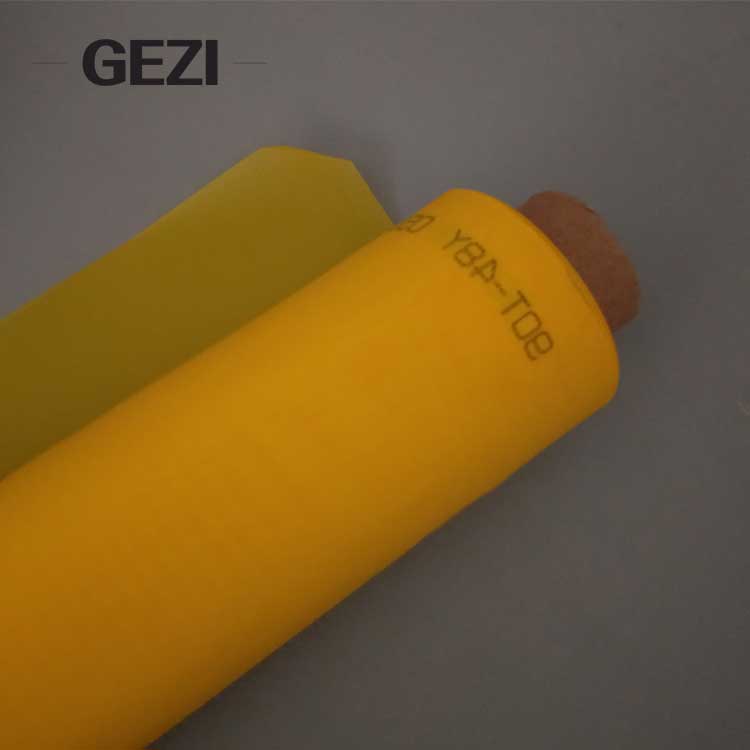Screen Printing Mesh Selection: Finding the Perfect Balance Between Durability and Ink Transfer
Screen Printing Mesh Selection: Finding the Perfect Balance Between Durability and Ink Transfer

Screen printing mesh has long been a popular method for producing high-quality prints on various surfaces. Whether it's T-shirts, posters, or other promotional materials, the choice of silk screen printing mesh plays a crucial role in achieving optimal results. Striking the right balance between durability and ink transfer is key to ensuring longevity and vibrant prints. In this article, we will delve into the considerations involved in screen printing mesh selection and explore how to find the perfect balance for your printing needs.
The Importance of Mesh in Screen Printing
In mesh screen printing, mesh refers to the woven fabric stretched tightly over a frame. It acts as the foundation for transferring ink onto the printing surface. The mesh's primary function is to hold the ink while allowing it to pass through the open areas, creating the desired design or image.
Two key factors come into play when selecting the appropriate mesh: durability and ink transfer. Durability relates to the strength and longevity of the mesh, while ink transfer determines how effectively the ink passes through the mesh onto the substrate.

Mesh Count and Durability
The mesh count, measured as the number of threads per inch, is a crucial consideration for durability. Higher mesh counts, such as 355 or 420, have finer threads and smaller openings, resulting in more intricate detail but lower ink flow. Lower mesh counts, like 110 or 160, have thicker threads and larger openings, allowing for higher ink flow but less intricate detail.
For designs with fine lines, small text, or intricate patterns, higher mesh counts are preferred. They provide better control over ink deposition and ensure sharp and precise prints. However, the fine threads in higher mesh counts make them more susceptible to damage, especially when printing with more abrasive inks or on rough substrates.
When durability is a primary concern, lower mesh counts are preferable. They can withstand the wear and tear associated with rougher inks and substrates. Additionally, lower mesh counts allow for higher ink deposition, making them suitable for bold designs, solid colors, and large areas of coverage.
Ink Transfer and Mesh Openings
The size of the mesh openings directly influences ink transfer. Larger mesh openings allow for greater ink flow, resulting in bolder and more opaque prints. On the other hand, smaller mesh openings restrict ink flow, leading to thinner and more transparent prints.
Determining the appropriate mesh opening size depends on the desired ink coverage and the type of design being printed. For solid colors or designs requiring heavy ink deposits, larger mesh openings (coarser mesh counts) are ideal. This allows for more ink to pass through, resulting in vibrant and opaque prints.
Conversely, for designs with intricate details or halftone images, smaller mesh openings (finer mesh counts) are necessary. This restricts the amount of ink passing through, creating a lighter and more transparent effect. It is essential to strike a balance between ink transfer and detail, as using too fine a mesh count can impede ink flow, leading to incomplete or patchy prints.
Considerations for Mesh Selection
When selecting the appropriate printing screen mesh, it is essential to consider the following factors:
1.Design Complexity: Determine whether your design requires fine details or solid colors. Fine details necessitate higher mesh counts, while solid colors benefit from lower mesh counts.
2.Ink Type: Different inks have varying viscosities and abrasive properties. More abrasive inks, such as metallic or glitter inks, can wear down finer meshes quicker, necessitating lower mesh counts for durability.
3.Substrate Texture: The texture of the substrate affects the wear on the mesh. Rougher substrates, like canvas or denim, can be more abrasive, requiring lower mesh counts for better durability.
4.Ink Coverage: Consider the desired ink








